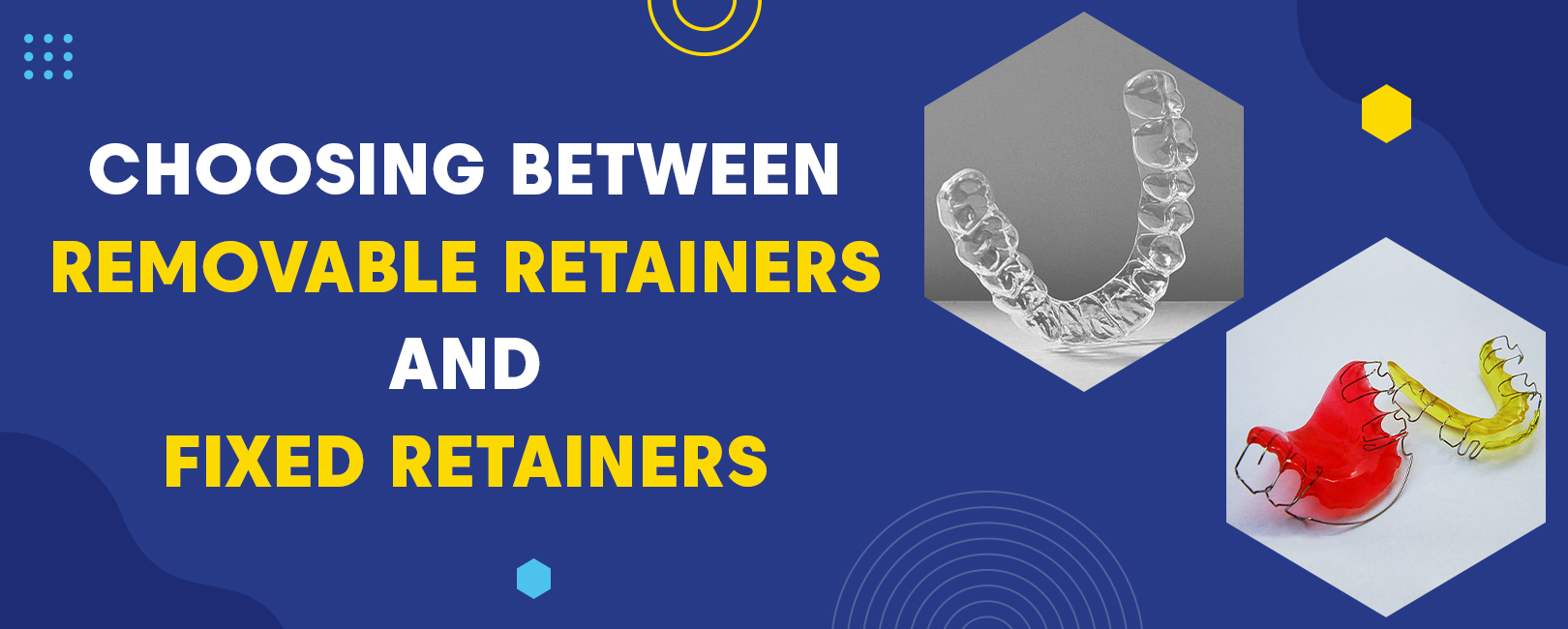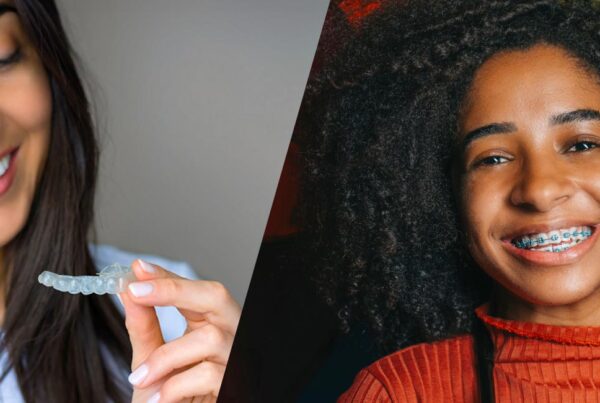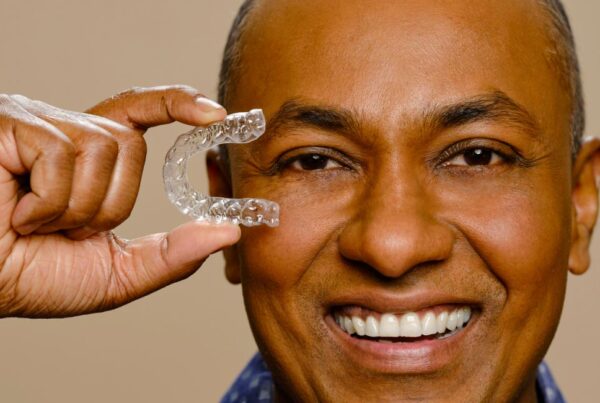Are you unsure whether to choose removable retainers or fixed retainers after getting your braces removed? Imagine this: Your braces are off, and your teeth are now perfectly aligned. It’s an exciting moment, but now you’re faced with a crucial decision – Which type of retainer is best for preserving your beautiful smile?
In this blog post, we will explore the benefits and drawbacks of both types of retainers to help you make an informed decision.
What is a Retainer
A retainer is a custom-made appliance that helps maintain the position of your teeth after braces or aligners have been removed. The two main types are removable retainers and fixed retainers.
Removable Retainers
Removable retainers, as the name suggests, can be removed by the wearer. They typically consist of plastic trays that snap over your teeth. You’ll need to wear them for 22 hours a day, especially for the first 6-12 months after treatment.
Fixed Retainers
A fixed retainer, also referred to as a “Bonded Retainer” or a “Permanent Retainer,” consists of a stainless steel wire that is securely adhered to the inner, tongue-facing surface of the front 4-6 teeth.
Benefits And Drawbacks Of Removable Teeth Retainers
Removable retainers are a popular choice for many patients after completing orthodontic treatment. They offer several benefits, such as:
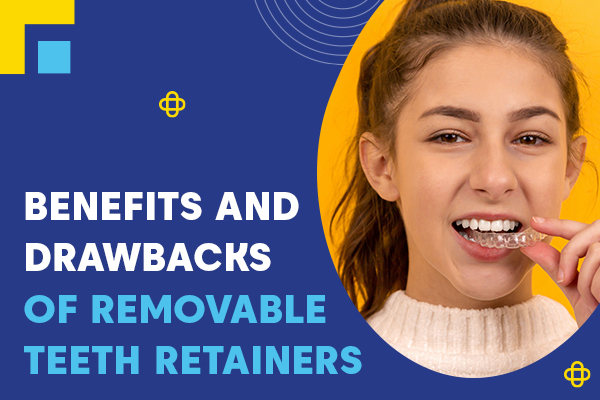
- Ease of Use: Removable retainers are convenient for activities like eating, brushing, and flossing due to their easy removal.
- Comfort: These retainers are custom-made, offering a comfortable and snug fit, typically made from thin, transparent materials.
- Flexibility: Removable retainers allow flexibility in wear time, accommodating specific instructions from the orthodontist and allowing short-term removal when needed.
- Replacement Options: If damaged or lost, removable retainers can be easily replaced by the orthodontist, providing peace of mind for patients.
However, there are also some drawbacks to consider when opting for removable retainers:
- Compliance: Success with removable retainers depends on consistent wear as prescribed. Inconsistent use can cause teeth to shift back.
- Risk of loss or damage: Removable retainers can be lost or damaged, requiring good habits to minimize these risks.
- Adjusting to speech: Initial wear may affect speech slightly, but most patients adapt with practice.
- Protection: Removable retainers offer less protection than fixed ones. Additional precautions or mouthguards may be needed for contact sports or activities with mouth trauma risks.
Benefits And Drawbacks Of Fixed Retainers
When it comes to orthodontic treatment, fixed retainers are often recommended to ensure that the teeth maintain their newly aligned positions. Let’s explore the benefits of fixed retainers:
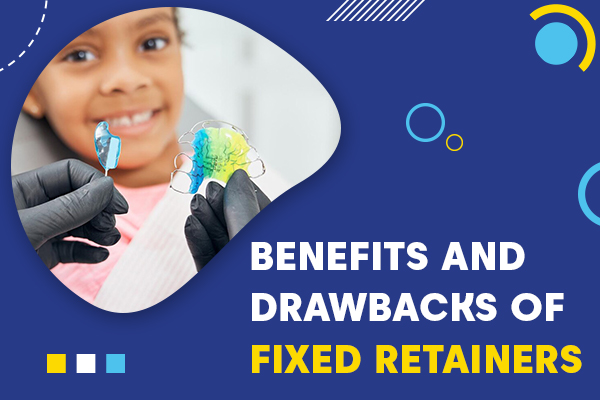
- Continuous Retention: Fixed retainers offer continuous tooth retention, preventing post-orthodontic shifting effectively.
- Invisible Solution: Lower fixed retainers are discreet, placed behind the teeth, ensuring no impact on your appearance.
- Minimal Maintenance: These retainers need little upkeep once bonded, saving time and hassle compared to removable ones.
- Long-Term Stability: Fixed retainers maintain tooth alignment, reducing the risk of relapse or shifting over time.
While there are many benefits of fixed retainers, there are some drawbacks to consider which include:
- Oral Hygiene Challenges: Oral hygiene can be more challenging with lower fixed retainers, requiring regular dental check-ups and specialized tools like floss threaders or interdental brushes for effective maintenance.
- Potential Irritation: Potential irritation from the wire is temporary and manageable with orthodontic wax or adjustments from your orthodontist.
- Cost: Lower fixed retainers may be more expensive than removable ones, but their long-term benefits make the investment worthwhile for many individuals.
- Repair or Replacement: In rare cases, the wire of a lower fixed retainer may break or become detached. If this happens, contact your orthodontist immediately.
After-care for removable retainers
Taking proper care of your removable retainer is essential to ensure its effectiveness and longevity. Here are some maintenance tips for maintaining your removable retainer:
- Clean your retainer daily with a soft toothbrush and non-abrasive toothpaste or denture cleaner to prevent plaque and bacteria buildup.
- Use cold or lukewarm water when cleaning or rinsing your retainer to avoid deformation.
- Handle your retainer gently to prevent damage, avoiding bending or twisting.
- Store your retainer in its case when not in use to protect it from damage and keep it clean.
- Avoid exposing your retainer to extreme temperatures (boiling water, dishwashers, microwaves) to prevent warping.
- Keep your retainer away from pets to prevent them from mistaking it for a chew toy.
- Regularly visit your orthodontist for check-ups to ensure your retainer fits properly and address any concerns.
Long-Term Effects Of Fixed Retainers On Oral Hygiene
Fixed retainers can be a great option for maintaining the alignment of your teeth after orthodontic treatment. However, it’s crucial to consider the potential long-term impact they might have on your oral hygiene.
- Fixed retainers can complicate brushing and flossing, making it harder to clean teeth effectively.
- Increased risk of plaque and tartar buildup due to challenges in cleaning around fixed retainers.
- Poor cleaning can lead to bad breath (halitosis) as bacteria multiply.
- To address these challenges, use soft-bristled and interdental brushes, consider fluoride mouthwash.
- Schedule regular dental check-ups for professional cleanings and advice on proper oral hygiene.
Securing Your Smile: Choosing the Right Retainer with Orthodontic Experts

Now you have the knowledge to make an informed choice between removable retainers and fixed retainers based on your own situation and needs. Both options have their advantages and disadvantages, but either one can effectively maintain your new smile. Feel free to discuss any questions or concerns with one of our experienced orthodontists who are here to help you make the best decision for the future of your smile.


